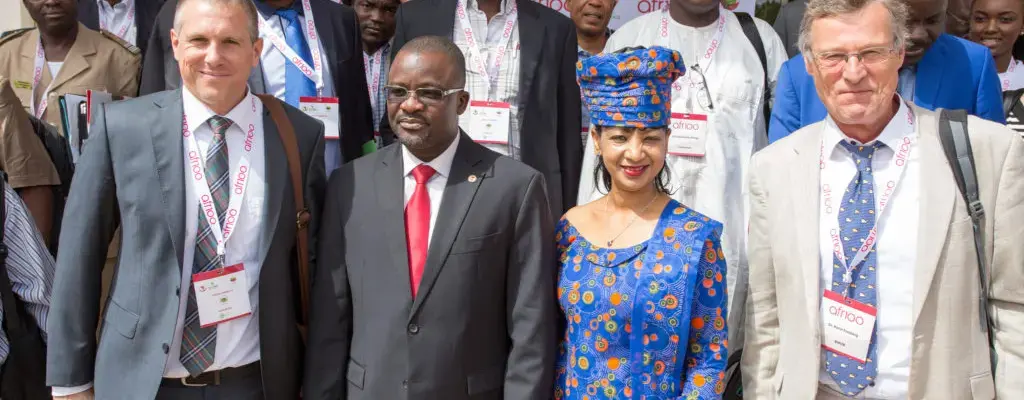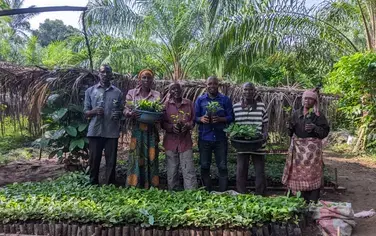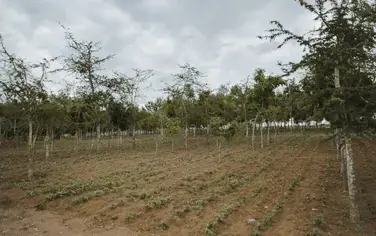Africa’s degraded landscapes may have a greener future
Niamey is a city of warm hues: red, cracked, sandy soils are the basis for the red bricks that form most of the infrastructure of Niger’s capital. It’s a city where only the hardiest of plants can manage to set down roots, but — like many of Africa’s fast growing cities — a mecca for rural-to-urban migration.
“Africa’s population will double by 2050,” notes Bernhard Worm, Senior Advisor at Germany’s Federal Ministry for Economic Cooperation and Development (BMZ) adding that with about 25% of those people depending directly on forests for their livelihoods, the stakes are high. Niger, for example, has a staggering birthrate of 7.3 children per woman. According to Worm, restoring degraded landscapes is not only a matter of environmental protection. It is also a key strategy for development: trees and forests provide jobs and economic opportunities.
Thus a rapidly-growing arid Sahel city without forests is perhaps the perfect place for a meeting on Forest and Landscape Restoration (FLR) to take place.
On September 26 to 27, 2017, twenty-four countries, as well as several technical partners, congregated in Niamey, Niger for the Second Annual AFR100 Partnership Meeting. This initiative, launched at the Global Landscapes Forum in Paris in 2015, has an ambitious aim to restore 100 million hectares of deforested and degraded land in Africa by 2030.
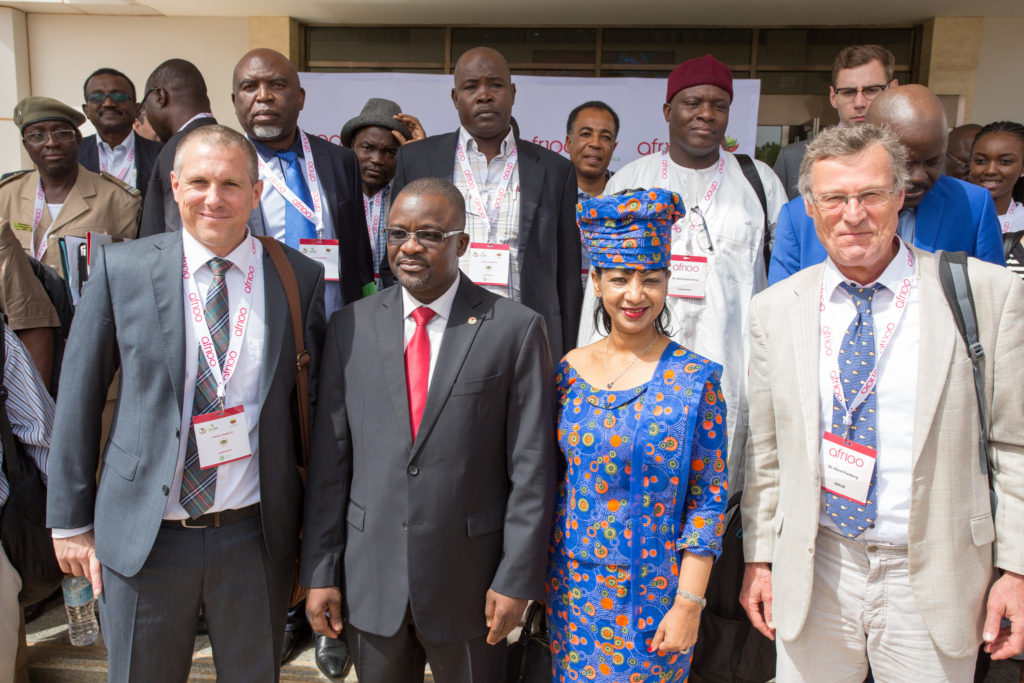
The pledges have rolled in with unprecedented speed in the field of FLR — an approach to restoration that looks at the challenge of land degradation in a comprehensive way, considering economic, social, and physical environments — with most commitments being initiated and driven by the ministers in countries themselves. This is the emergent formula that has made AFR100 the most staggering continental restoration commitments on the globe: it is Africa-owned and country-led, with the New Partnership for Africa’s Development Agency (NEPAD) acting as the secretariat.
With last year’s partnership meeting having been held in Addis Ababa, Ethiopia, the question many were asking was: “Why Niger?” What makes this chunk of the Sahel and advancing Sahara the right place to host a forward-looking forum on Forest and Landscape Restoration?
As it turns out, Niger is a unique success story in implementing FLR on the ground, having already restored at least 5 million hectares using Farmer-Managed Natural Regeneration (FMNR), pledging 3.2 million hectares under the auspices of AFR100.
How many hectares?
Of the aspirational 100 million hectares to be restored, more than 80 million have already been pledged by 24 African countries and counting. AFR100 isn’t alone in setting lofty restoration goals: rather, it works in concert with a number of other international ambitions.
The Bonn Challenge was launched in 2011 by BMUB in — you guessed it — Bonn: it aims to restore 150 million hectares by 2020. AFR100 represents the implementation of the Bonn Challenge in Africa by the signatory African countries. In turn, all of these pledges relate to the 2014 New York Declaration on Forests (NYDF), which calls upon to world to halve deforestation by 2020, stop it entirely by 2030 and restore hundreds of millions of hectares of degraded lands globally — a cumulative area roughly corresponding to the size of India.
Other regional initiatives — such as the African Resilient Landscapes Initiative (ARLI), the African Landscapes Action Plan (ALAP) and the Great Green Wall Initiative (GGWI) — also have synergies with AFR100.

From pledges to implementation
While the pledges underlying AFR100 are certainly ambitious, this partnership meeting focused on how this ambition will be realized on the ground.
“Even if we cannot reach the targets by 2020 or 2030 I think we have started — and by we I mean governments, countries, people — we have started a process of being aware of this restoration opportunity.” Says Horst Freiberg, from BMUB.
So while the discourse surrounding FLR that has unfurled in the wake of AFR100 is a success in and of itself, the countries presenting at this year’s partnership meeting wanted to get down and dirty in implementation.
Technical partners — like the World Resources Institute (WRI), the International Union for Conservation of Nature (IUCN), Food and Agriculture Organization of the United Nations (FAO) — provided an overview of voluntary guidelines and a monitoring framework. Having these tools will allow partner countries to track restoration progress and to document best practices.
In turn, representatives from several signatory countries — Burundi, Cameroon, Chad, Ethiopia, Ghana, Guinea, Ivory Coast, Kenya, Madagascar, Malawi, Mozambique, Niger, Nigeria, Senegal, South Africa, Swaziland, Sudan and Togo — parsed progress, challenges, local contexts and more. Though these participating countries have very diverse landscapes and geography, and encounter different challenges in implementation, they are united in their commitment to the AFR100 initiative and Forest and Landscape Restoration.
People-centered restoration
Implementing restoration projects isn’t just about tree-planting and mapping hectares, however. It’s also about the lives and livelihoods of the people living on or adjacent to degraded lands. The most vulnerable among them — women, youth, migrants and indigenous peoples — are the hardest-hit by a changing climate and an encroaching desert.
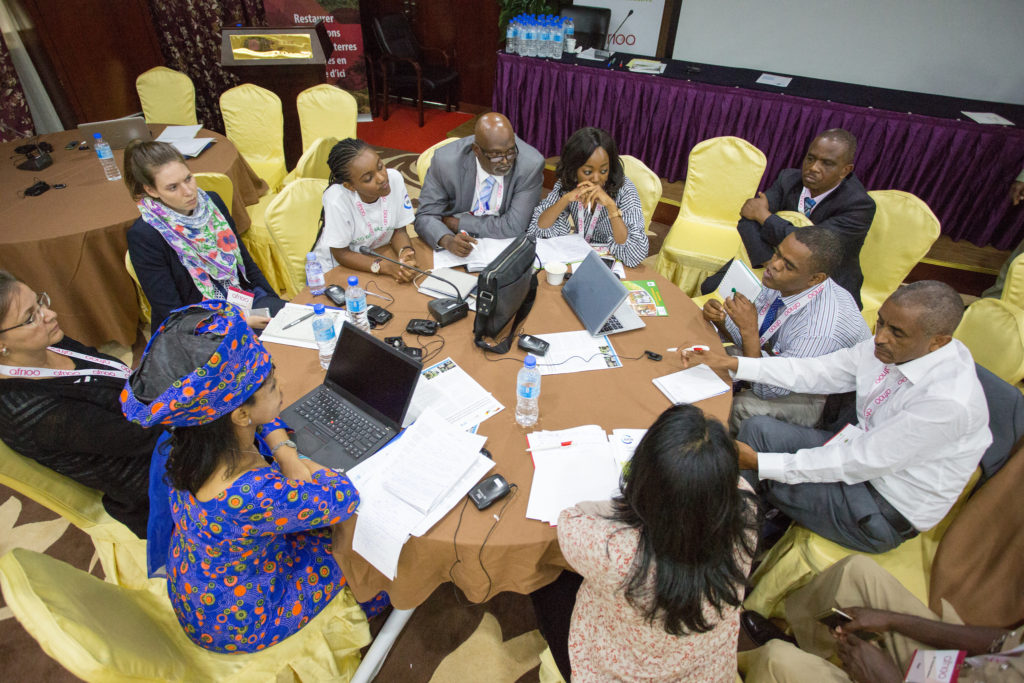
“We don’t want to inherit degraded land,” was the rallying cry of the current Miss Earth Rwanda, Honorine Uwase Hirwa, who is using her platform as a youth ambassador for Forest and Landscape Restoration with the IUCN. She observed that women and youth are often excluded from the higher-level conversations of FLR, and being asked, “whose daughter are you?” by another participant was a demonstration of the implicit bias keeping women and youth out of these conversations.
Calling women and youth “catalytic sectors,” Meseret Zemedkun, The UN Environment project manager of the African Rift Geothermal Development Facility (ARGeo), concurs with Uwase Hirwa, stating, “women and youth should not only be the beneficiaries and observers: they should be part of the decision making, part of the change and game-changers, and contribute significantly to the objectives of these Forest and Landscape Restoration projects.”
Other vital stakeholders are, of course, farmers. As mentioned, Niger has experienced a resounding success with the Farmer-Managed Natural Regeneration (FMNR) model, and two Nigerien farmer-innovator “restoration champions” were on hand to detail their success stories, making innovative use of the versatile Gum Arabic tree (Senegalia senegal), a species that has been used both for restoration and economic development across the Sahel region.
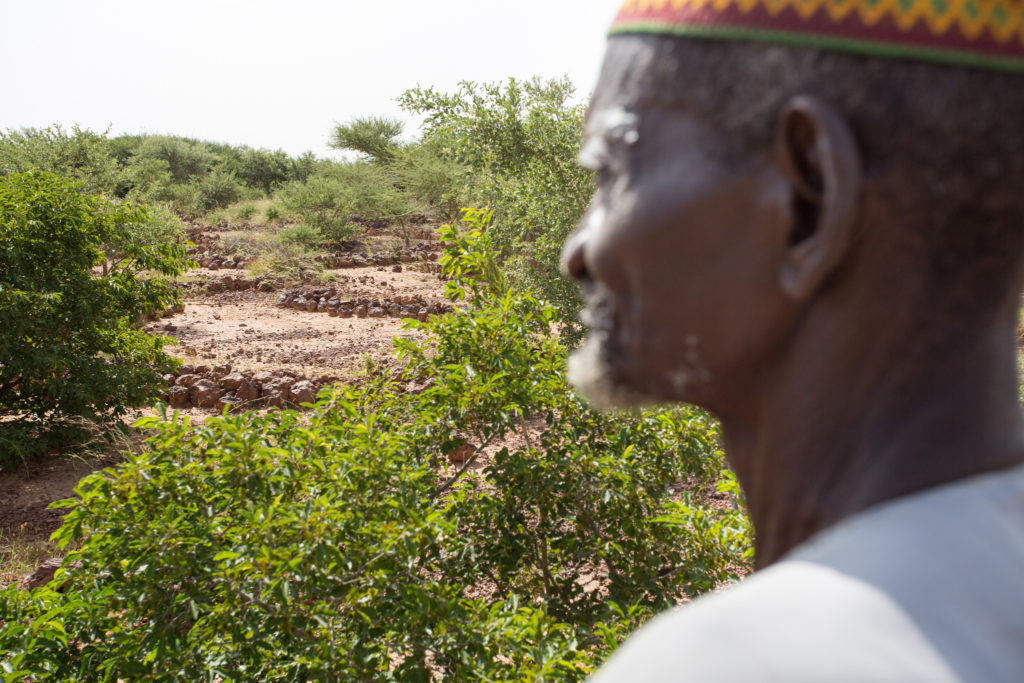
Pushing for the private sector
While putting people and livelihoods at the center of the conversation is one way forward, the second day of the event veered towards the eminently pragmatic: how will Forest and Landscape Restoration be financed in Africa?
Martin Cremer, from Frankfurt School of Finance, noted in a presentation that, “very few initiatives are financed through the private sector.” Further, in Africa in particular, lacking tangible infrastructure (e.g. roads, site access) and intangible infrastructure (e.g. water rights, regulatory infrastructure) are key challenges.
Still, he offers solutions. For example: using a seed capital assistance model developed in the renewable energy space in 2008, and enticing private sector actors by buffering risk with public funding to show that FLR projects are commercially-viable.
A presentation by Faustine Zoveda from the FAO detailed a successful Forest and Landscape Investment Forum (FLIF). According to Zoveda, one of the main problems in mobilizing funds — public or private — is, “a lack of awareness and understanding, as well as a lack of connection between these sectors.” The FLIF event, “provided a marketplace for these partnerships in FLR to be made.”
What’s next?
Building on the Kigali declaration of July 2016, the Niamey Call to Action from this event urges other African nations to take up the AFR100 mantle and make commitments to restoration, to meet the goal of 100 million hectares and build further capacity for South-South cooperation. Further, it implores that these commitments are followed by context-appropriate implementation.
Sixty percent of the population of Africa is below the age of twenty-five, and as Uwase Hirwa declared, they do not want to inherit degraded land. AFR100 is a bold commitment to action, but there is certainly work to be done.
AFR100 is supported by implementing partners World Resource Institute, The World Bank and the International Union for Conservation of Nature (IUCN), as well as two German ministries: The Federal Ministry for the Environment, Nature Conservation, Building and Nuclear Safety (BMUB) as well as BMZ through GIZ and KfW development bank.
This coverage was made possible by the New Partnership for Africa’s Development (NEPAD), BMZ, and GIZ.
